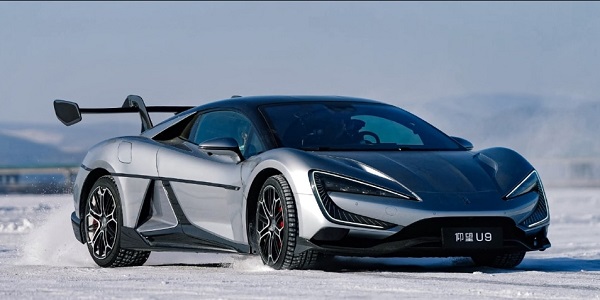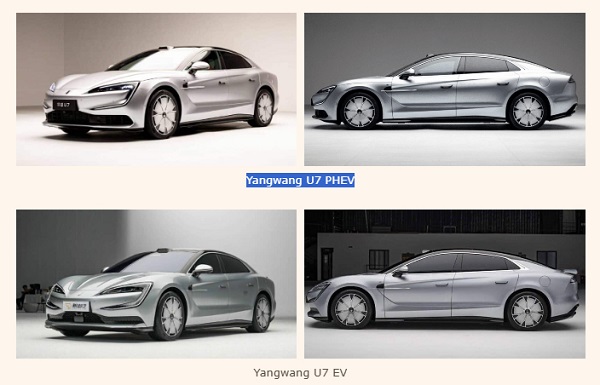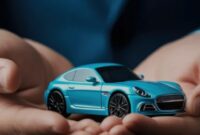BYD plans to begin the delivery of NOA (Navigate on Autopilot) smart driving across its entire vehicle lineup in 2025, according to a report. The company aims to “democratize” access to L2+ smart driving by making it available on even its most affordable electric vehicles, such as the BYD Seagull priced at 68,900 yuan (9,500 USD).
Although the Shenzhen-based manufacturer leads China’s EV sales, it falls behind in software, advanced driver-assistance systems (ADAS), and smart driving capabilities. This may change by 2025, as BYD has spent the last two years investing in the software aspects of its vehicles.
BYD has partnered with several ADAS providers, including drone manufacturer DJI and Huawei, yet it has only provided advanced ADAS in a limited number of EVs. In 2025, the company is set to deliver its own developed ADAS algorithms throughout its entire range, “from the economical BYD Seagull to the high-end Yangwang U8,” as reported by 36kr.
The shift towards software began in September 2023 when BYD formed an ADAS smart driving team that now comprises 1,300 members, according to the report. In January 2024, the firm announced plans to invest 100 billion yuan (13.6 billion USD) into the development of ADAS.
The BYD ADAS team is concentrating on creating urban smart driving (CNOA – City Navigate on Autopilot) solutions and highway smart driving (HNOA – Highway Navigate on Autopilot) systems.
Experts in the industry did not anticipate BYD to accelerate its progress so quickly. If the automaker successfully rolls out its ADAS in the first half of 2025 as scheduled, it will be quite remarkable, the report states. Suppliers mentioned in 36kr interviews indicated that they recently received inquiries for highway ADAS solutions for EVs priced between 100,000 and 150,000 yuan (13,600 and 20,500 USD) from other manufacturers, but they expect delivery to occur no earlier than 2026.
The price competition in 2024 is expected to remain fierce into 2025. However, there will be a shift in focus, as it will not solely be about the lowest prices but also about which company can provide the best ADAS specifications at those lower price points.
“BYD integrates a 7/11 camera system and front-facing three-eye vision cameras into EVs priced at 100,000 yuan, according to MIIT filings,” emphasizes 36kr. The 7/11 camera configuration means that the ADAS employs 11 cameras, seven of which are long-range, while the remaining four are wide-angle parking cameras. BYD anticipates selling 5.5 million vehicles in 2025 and has ordered one million chips from Nvidia and Horizon Robotics.
BYD’s ADAS is categorized into three tiers:
- DiPilot 100: Basic-level ADAS featuring 100 tops and essential NOA functionality, typically powered by the Drive N Orin chip from Nvidia or the Journey 5 from Horizon Robotics.
- DiPilot 300: Mid-range ADAS with semi-autonomous highway driving (HNOA), a single lidar system, and one Nvidia Orin X chip with 300 tops.
- DiPilot 600: Premium ADAS that incorporates both HNOA and CNOA for urban driving scenarios, employing multiple lidars, achieving L3 driving, and powered by two Nvidia Orin X chips with 508 tops.
In 2025, BYD intends to introduce an advanced version of the ADAS for the BYD Seagull and other EVs. By the end of the year, the objective is for the entire lineup to feature some form of smart driving capabilities.
In 2024, urban smart driving features were available on EVs averaging over 200,000 yuan (27,300 USD). In 2025, the urban NOA function is projected to become standard for EVs priced at 150,000 yuan (20,500 USD), while in 2026, it is expected to be standard on 100,000 yuan EVs, as cited by a manager from a leading smart driving firm. The report concludes that highway NOA will be implemented in 100,000 yuan (13,600 USD) EVs this year.
BYD has delivered 100 units of the Yangwang U9 jumping supercar in just five months. This vehicle is priced at 1,680,000 yuan (229,700 USD) and boasts a peak power output of 960 kW (1,287 hp) with a maximum range of 450 km according to the CLTC standard. Its standout feature is the Disus X suspension and hydraulic system, enabling it to perform jumps and dance movements.
The Yangwang U9 electric sports car debuted in the Chinese market in February 2024, offered in a single trim for 1,680,000 yuan. However, the model’s deliveries commenced in September. Data from China EV DataTracker shows that Yangwang delivered 16 units of the U9 in September, 17 in October, 24 in November, and 24 in December, bringing its total sales to 81 units for the year.
YangWang U9 sold 100 units in China
On January 21, Yangwang revealed that it had delivered its 100th U9 sports car in China. This indicates that the manufacturer has sold 19 units of this model in January 2025. Yangwang claims that the U9 is the first Chinese supercar to achieve this level of sales.
The sales figures for the Yangwang U9 are quite remarkable, especially considering its price. For context, the Hyptec SSR from GAC sold 19 units in 2024. Additionally, the GAC-supported sports car has a starting price of 1,286,000 yuan in China (175,800 USD), making it seemingly less expensive than its BYD competitor.
The high popularity of the Yangwang U9 in China is easy to understand, as BYD marketers are heavily promoting this vehicle. In November 2024, the Yangwang U9 finished a lap at the Nurburgring Nordschleife in 7:17.900. Concurrently, the car achieved a top speed of 391.94 km/h. In January 2025, BYD released footage of the Yangwang U9 sports car leaping over road spikes while in self-driving mode.

There’s a reason the Yangwang U9 is referred to as a jumping sports car. It features a Disus X suspension and hydraulic system, allowing it to ride on three wheels, leap, and perform tricks. Many owners attempt to utilize these capabilities on public roads after purchasing the car. Nevertheless, such actions seem to be illegal, as the police have fined Yangwang U9 drivers several times.
More about the Yangwang U9: This two-door sports car measures 4966/2029/1295 mm. It has a curb weight of 2,475 kg, which is relatively heavy for a supercar. However, the U9 is powered by four electric motors that together produce 960 kW (1,287 hp) and 1,680 Nm of torque. It can sprint from 0 to 100 km/h in just 2.36 seconds.
The Yangwang U9 is equipped with an 80 kWh LFP battery pack, offering a range of 465 km under CLTC testing conditions. Thanks to its 800V architecture, it can charge from 30% to 80% in just 10 minutes. Furthermore, the supercar supports dual charging, allowing two independent charging guns to be used simultaneously.
BYD’s Yangwang U7 PHEV, featuring a 2.0T engine and four electric motors, boasts a pure electric range of 180 km.
On December 9, BYD’s Yangwang U7 PHEV model was listed in the latest MIIT catalog in China. Previously, both the EV and PHEV versions were available for pre-sale at the Guangzhou Auto Show in November, requiring a deposit of 20,000 yuan (2,800 USD), and they come in four- and five-seat configurations.
The Yangwang U7 PHEV utilizes a plug-in hybrid powertrain that includes a 2.0T engine (model BYD4H20) and four permanent magnet synchronous motors (models TZ220XYBC and TZ220XYBN), which are produced by BYD. The engine produces a peak power of 200 kW (268 hp), while the four motors provide either 260 kW (349 hp) or 240 kW (322 hp), summing up to a combined motor output of 1,000 kW (1,341 hp). It can reach a maximum speed of 270 km/h. The vehicle is fitted with a 52.4 kWh BYD Blade battery that gives a pure electric range of 180 km. With a full tank and a full charge, the WLTC comprehensive range can reach 1,000 km.
Built on BYD’s e⁴ platform (also known as YiSiFang), the Yangwang U7 PHEV has dimensions of 5360/2000/1515 mm, and its wheelbase measures 3200 mm. Its curb weight is 3223 kg, with an approach angle of 13° and a departure angle of 14°. The car is equipped with 275/40R21 tires. Additionally, the Yangwang U7 features BYD’s new DiSus-Z intelligent body control system.

Standard features of the Yangwang U7 PHEV include a panoramic sunroof and an electric rear wing. Optional enhancements include carbon fiber trim for the front and rear fenders, various brake caliper colors, carbon fiber side skirts, e⁴ logos, and digital side mirrors.
In terms of design, the Yangwang PHEV features a larger grille due to the presence of an engine in the front for heat dissipation purposes. Otherwise, the front design maintains the bold C-shaped headlight arrangement.
Inside, the Yangwang U7 offers two color options: red and white. The cockpit is equipped with a three-spoke multifunction steering wheel, a 23.6-inch full LCD instrument panel, a 70-inch AR-HUD, a 12.8-inch vertical central touchscreen similar to the U8, and a 23.6-inch entertainment screen for the co-pilot. The audio system is provided by Dynaudio’s 23 Evidence Platinum speakers.
The center console has a sliding cover that reveals 50 W wireless charging pads and cup holders, which can each be individually heated or cooled. Further back is an armrest box that contains a refrigerator. Behind the refrigerator, there’s a touchscreen to adjust the temperature and air conditioning.
In the rear section, the four-seater version features an integrated center console design, while the five-seater version has a retractable armrest.


